
WARNING: This article contains heavy spoilers for Persona 3/Persona 5 and mild spoilers for Persona 4.
On finishing Persona 5 at the weekend, I felt what I always feel at the end of a gruelling 80-hour role-playing game-fest: equal parts sad and relieved. I’d played the game on Normal mode, managing just a handful of Velvet Room death screens and surviving the final boss by the skin of my teeth. This was in stark contrast to my experiences with Persona 4, Persona 4 Golden, and particularly Persona 3, which I played on Easy mode - I still managed to burn through all of my Plumes of Dusk by halfway through the game.
My experiences with Persona 5 have made me reflect on the tumultuous relationship between the Persona series (indeed, the Shin Megami Tensei series as a whole) and game difficulty. Getting through an Shin Megami Tensei or Persona game has become a badge of pride for many, and I didn’t quite feel the usual sort of pride on finishing Persona 5. However, I began to think about how Persona 3 in particular maintained difficulty in part through sources of frustration, rather than merely demanding a high level of skill from the player. This would suggest that Persona 5 is actually an improvement when it comes to game design, since it makes use of difficulty in fairer ways.
So, has the series improved through fairer game mechanics, or has it lazily shed some of its signature difficulty as a cheap way to attract newcomers to the franchise? Let’s weigh up the changes from Persona 3 FES to Persona 5 and find out. Unfortunately, I’m still loitering in the Seven Sisters High School intro to Persona 2 Eternal Punishment, so games earlier than Persona 3 FES will have to wait for another day.

Switching out team members
The mechanic that stood out the most for me in Persona 5 was the use of Confidants to grant useful tactical advantages to the protagonist, such as being able to swap out teammates mid-battle. If you rub shoulders with Hifumi, the shogi player who's the Star Confidant, you gain the ability to substitute teammates during battle, first on your protagonist’s turn but later during anybody’s turn (as long as you're subbing out the teammate whose go it is).
This is a concept completely alien to Persona 3, Persona 4, and Persona 4 Golden. If you want to swap out teammates in Persona 3, you must return to the ground floor of Tartarus, which can be a feat in and of itself (see below). Furthermore, since your teammates can get tired in battle or they may simply want to go do their own thing/study/sulk in their rooms some evenings, your entire party won’t be available on some nights, making substitutions a little less open-ended.
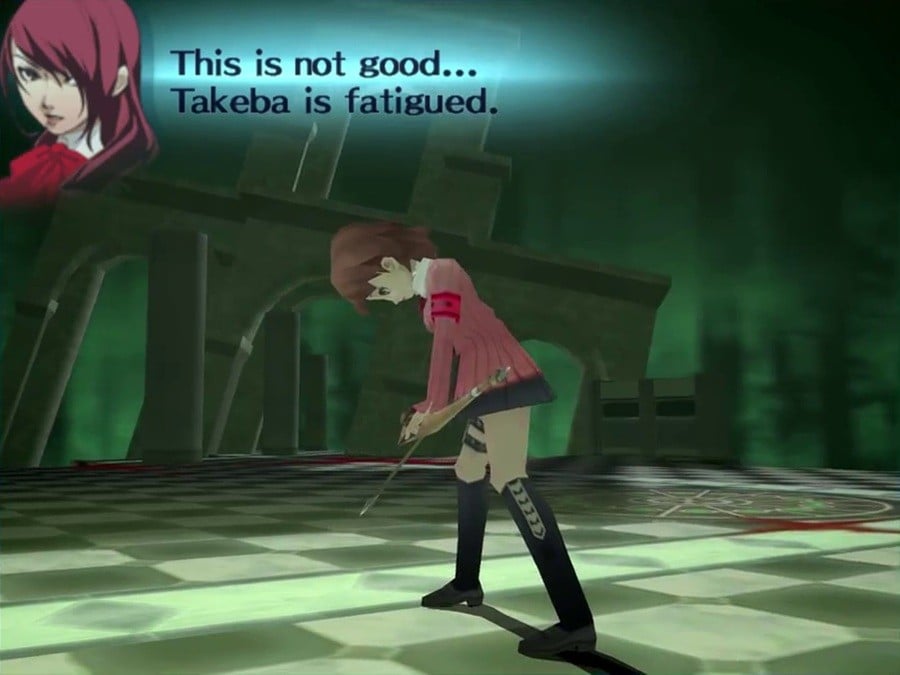
In Persona 4 and Persona 4 Golden, leaving each dungeon is much easier if you keep Teddie in your party or stock up on Goho-Ms, but you do have to leave each dungeon before swapping around your team members. The removal of the tiredness mechanic and the presence of Fox to heal you (at a cost) is miles ahead of the annoying way that Persona 3 deals with going for a second bout of exploration with new team members, but it still has its limitations compared to Persona 5.
While I find that the free and easy swapping mechanic in the later stages of Persona 5 is a fun way to keep the action going (and I even found it indispensable in the final two dungeons, since I was running low on SP replenishing items), it did seem a little too convenient. The tiredness mechanic and the difficulties in leaving Tartarus in Persona 3 were indeed archaic, but having to think carefully about which team members I selected for the evening, since I couldn’t just swap them around at a moment’s notice, added an extra layer of strategy and planning to the gameplay. In Persona 5, any need to be strategic here started to feel like an afterthought; I knew that if I was struggling, I could swap people without putting the party at much risk, and the only punishment would be missing a turn.
Teammates levelling up, regardless of use
As long as you put work into your relationship with Yuuki Mishima, the Moon Confidant, you'll have no problems keeping all of your crew ship-shape, regardless of how you use them. Depending on how much you bond with Mishima, which unfortunately involves bearing witness to his pitiful attempts to take some credit for your fame, unused teammates will either level up at a snail’s pace or will level up at the same rate as those you use regularly. I stopped putting Ryuji in my team pretty quickly after his heartless reaction to Yusuke finding out the truth about his mother, but the insensitive clod still kept on levelling up. Hmph.
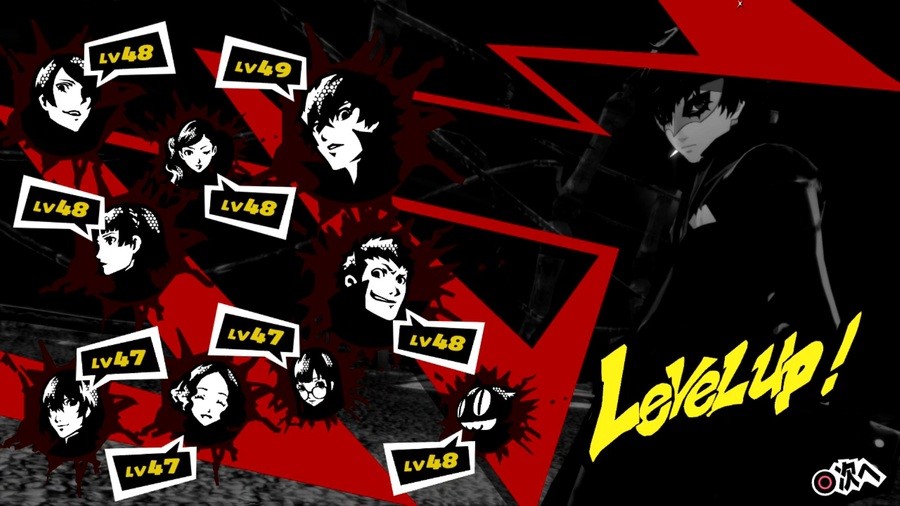
In Persona 3 and Persona 4, if you wanted to keep an even team, you had to put the work in; unused characters would not level up. This led to me having Junpei and Yukari (yeah, yeah, don’t judge me) stuck on Level 24-ish for pretty much the entirety of Persona 3, because I'm lazy and Akihiko and Mitsuru, as my senpais, always came first.
In Persona 3, the unevenness of levelling was made all the more troublesome by the fact that one combatant disappeared for good, along with his skills and expertise. Put a load of work into training the uppity Shinjiro in Persona 3? Too bad, so sad – he dies not long after he re-joins SEES. If you play Persona 3 Portable instead of the PS2 versions of the game, he can survive in the female protagonist’s arc, but he will still be absent from battle for the rest of the game, since he'll be in a coma.
In a perverted way, I was kind of hoping that disappearing characters would be used to sprinkle a touch of difficulty on top of Persona 5. Sure, Goro Akechi turns out to be a mole after one Palace and so is no longer usable beyond that point, but I didn’t think he added that much to the team anyway. Shinjiro regenerated health with every turn and had strong Physical skills, which made him quite useful. I ended up wishing Ryuji had died in the explosion at the end of Shido’s Palace, or that Morgana had “disappeared” just before the final boss battle, because the plot paved the way for either of those things to happen and they would have counterbalanced being doused in experience points. Furthermore, a cheery Persona ending isn’t a very true Persona ending, if you look at the series’ history.
Overall, I thought the simultaneous levelling up was a little too forgiving, but I still enjoyed the fact that rotating between teammates in the later Palaces became easier because of it.
Frequency of save points and warping around the map
Saving regularly in Persona games is an absolute must, unless you want to run the risk of losing upwards of an hour of progress and being unable to look at the game for a week afterwards. Thankfully, Persona 5 encourages you to take risks in dungeons, since it's generous with the amount of Safe Rooms (which also serve as warp points) spread throughout each Palace. While it's on you to seek them out for yourself, and they can sometimes be quite easy to walk past accidentally, finding one and being able to use that to warp back to the entrance of the Palace and fuse more Personas is a godsend.

Persona 3 is ruthless with how few opportunities it provides for saving in its one big dungeon. You must always warp back to the ground floor in Tartarus to save; there are no intermittent save points, as there are in the analogous Mementos in Persona 5. Furthermore, being able to warp back to the ground floor is a challenge; every 5 floors or so, there is a one-way warp machine, but (as the name suggests) if you leave using this, you will lose any progress you made in Tartarus past the last two-way warp machine you activated. These rarer two-way machines are only on every 10th floor or so, and if you’re clinging to health, with little SP, and desperately need to reach the bottom floor, there’s no guarantee you will find the warp machines that are there before you’re knocked out. Basically, good luck, buddy.
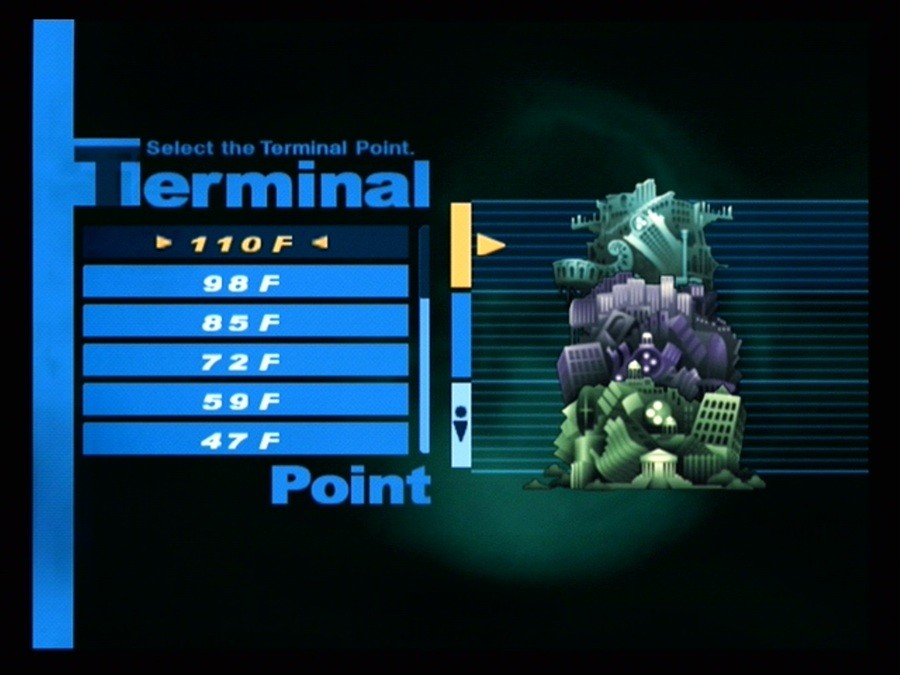
Persona 4 is much fairer, though it still has its own challenges. As mentioned before, if you keep your stock of Goho-Ms replenished and/or keep Teddie in your team with a decent amount of SP, getting back to the TV overworld is no sweat. You must still return to this overworld if you want to save, however, with one exception: if you're on a boss battle floor in vanilla Persona 4, you do have the option of saving before you start the battle. Depending on your chosen difficulty level in Golden, you may have the option to restart disastrous boss battles or the previous floor, so being unable to save immediately before boss battles makes little difference if you’re smart with your items.
Furthermore, upon entering a dungeon you’ve already visited in vanilla Persona 4, you'll have the option to start at the beginning of the highest floor you reached; in Persona 4 Golden, it's the last floor you were on, even if you'd been on a higher floor previously but descended to hunt for items. This only works if you use Goho-Ms or the Traesto spell to leave the dungeon. Nevertheless, some of the floors in Persona 4 can be quite tricky, and Shadows respawn much more frequently in all versions of Persona 4 than in Persona 5, so there’s no guarantee that even the concessions mentioned will save your skin if your team gets into a state.
Overall, the easier travel and save system in Persona 5 is so intuitive that it’s difficult not to love it. While I put up with battling my way to the next warp point in Persona 3, and stocking up on potions and keeping Teddie in my team became second nature in Persona 4, the saving and warping mechanics of Persona 5 ultimately remove a layer of frustration which only served to provide false difficulty spikes in previous games.
Where Persona 5 still packs a punch
This is not to say that Persona 5 is an RPG fit for toddlers. Some of the most excruciating aspects of the older games remain in place.
The first feature that needs a mention is the fact that if your protagonist is KOed, regardless of how your other team members are doing or whether they have revival spells in their repertoire, you get a Game Over/retry screen. This is completely nonsensical, given that in the later chapters of the games, you almost expect one or two of your teammates to need revival. However, it's easily explained away with the cop-out argument that “you are special”. Furthermore, it does get easier with time to adjust your play style to this fact, always healing the protagonist before others and increasing his Defence wherever possible. Using shields on characters other than your protagonist also becomes taboo, unless you have a particularly healthy stock of them.
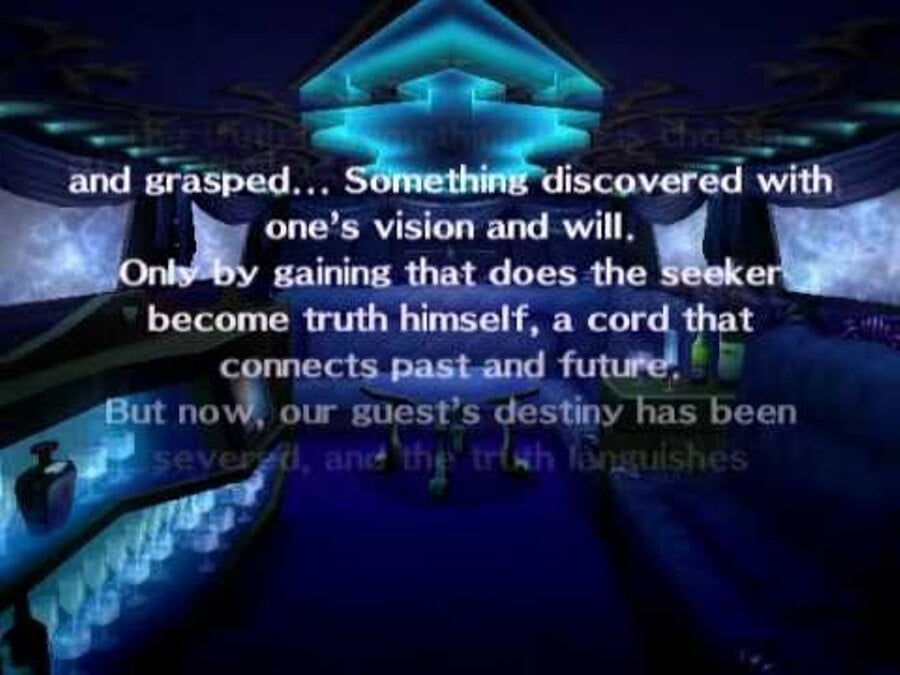
The second feature is almost unforgivable, particularly paired with the first: the use of Mudo or Hama one-hit spells against your party. Sure, there are items to guard against this and there are Personas you can equip that are impervious to one-hit kills. But in every single Persona game I’ve played, my protagonist has been unexpectedly one-hit killed and I have then launched a tirade of swear words at my TV screen for the next half hour. It’s a crushing feeling when it happens to you.
Is lowering difficulty lazy or laudable?
Based on this article it might seem as though I think lowering the difficulty of a Persona game is a bad thing. I suppose, given that I started with Persona 3 and it will always be “my first”, I do feel that way… some of the time.
Trying to take a more objective view, I think Persona 5 concedes a little to the need to open up the Persona franchise to more players, while mainline Shin Megami Tensei will always remain dark, torturous, and uncompromising. In many ways, this is a good thing. Previous Persona games may have purported to reward the cunning, strategic player, but actually they were stowing clunky mechanics away in dark corners, creating a false impression of difficulty in some areas through merely irritating the player. Ultimately, we want games as good as Persona to keep players gripped from start to finish, rather than players being compelled to take days-long breaks to calm themselves down thanks to an unjust Game Over screen. As a result, I think Persona 5 generally constitutes a strengthening of the core Persona game mechanics, particularly in comparison with my beloved Persona 3.
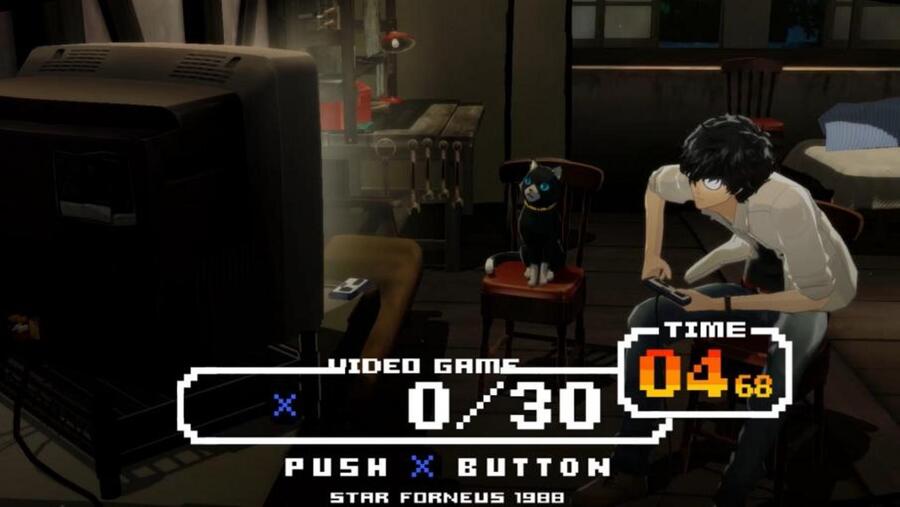
I just hope that I don’t have to play the next Persona title on Hard mode; I am so terrible at RPGs that there really is a problem if even I can trounce Normal mode.
What do you think of the Persona series and how it handles difficulty? Are you a fan of Persona 5's relative accessibility? Try not to get a Game Over in the comments section below.





Comments 26
Haven't read the article to avoid spoilers but I feel the choice of difficulty is always good. People like me just want to enjoy the story and get to know the characters, now if the combat is engaging and makes me want to try it at a higher difficulty then I have that option.
A good/high difficulty is nice. But i dont want to play a game that feels like a unfair punishment.
The changes to Persona 5 mostly remove artificial difficulty, like limiting save points or giving you arbitrary metrics to worry about (like how fatigued your party is... seriously, screw that mechanic!). Changes in how exp is doled out is necessary, I feel, for a game with a large cast that requires you to choose from only a few party members. It makes everyone in the cast viable should you need to use them in a battle. The changes are similar to Pokemon and exp share, which has only improved the balance of those games.
I'm playing the game on hard mode right now and I feel like it's tough enough to provide proper balance for the gameplay. It's not brutally difficult. and it's still easy to trounce most random encounters if you have a set of Personas with a variety of skills, but it does keep me on my toes. Especially the bosses!
And I still love that Persona 4 Golden's New Game+ custom difficulty.
I make the battle harder and set the rewards to highest. quite balance.
while the original hard mode, provides me harder battle and less reward, it doesnt appeal to my brain reward system.
As a general rule, I always try to beat every game on Normal difficulty, but RPGs are weird for me. I'm capable of some impressive stuff one moment and a botch that would make even amateur strategists facepalm the next. In addition, since the story is the main meat of an RPG, sometimes I just want to progress to get to the next story beat, so I usually don't have a problem lowering the difficulty if I need to.
@Ralizah 'for a game with a large cast that requires you to choose from only a few party members. It makes everyone in the cast viable should you need to use them in a battle.'
Pretty much this, I stopped using Kanji almost from his introduction in P4G as his level significantly fell behind the level curve of the rest of the team. That pattern was followed by teddy later on which was also a shame.
For me the difficulty in Persona is having the time to play and enjoy the thing.
Anything that cuts down on the ridicilous required grinding in jrpg's is a good thing.
Though it's high time they got rid of that ancient and quite frankly terrible mechanic, which was just there in the old 8 and 16 bit games to artificially pad out a game.
I don't know/care about Persona, but I recently played a third of Tales of Berseria.... I was a big fan for a while, and it was the first one I'd gotten in about 10 years, so I was pretty excited. I started on normal difficulty and pretty much one-hit all the enemies. So I turned the difficulty up all the way, and I only ended up dying once in about twenty hours. It's ridiculous.
I don't care if easy is easy or Nightmare is an unplayable nightmare. The difficulty should suit the difficulty setting. If it's too easy, it's just as little fun as if it's too hard
Great article, we'll written. Thanks!
Difficulty, like beauty, is in the eye of the beholder. I think difficulty curves should be about practice and developed skill as well as knowledge of the game. Difficulty that becomes about grind and frustration are where higher difficulty fails. I want to feel accomplishment if I go for a higher difficulty, not a sense of anger or boredom. I am still part way through my first playthrough of P4G and I started on easy because I am not experienced in JRPG's so I want to enjoy it. I would like to take my next JRPG a little higher to reflect my experience. The levels should reflect that experience.
I played Persona 5 (my first one) on normal and I felt the difficulty was perfect. I died about 10 times in a 100 hour play through, one of those being a boss. But I felt challenged still - there were plenty of other times that I got by where one more turn would have led to disaster. I felt like there was never a need to grind, which is good for a 100 hour game. The closest thing I felt to grinding was the constant reloading trying to raise the twins confidant.
I died about half a dozen times in my playthrough, a little easier than p3 but I'm used to the formula at this point.
@themcnoisy I never bothered using Naoto for that same reason. I think Persona 5 handles the issue with elegance. The game is hard where it counts if you play on the Hard or Merciless difficulties.
P5's harder difficulty is pointless, there's only one point in doing it on a harder difficulty and that's for better reward's.
I would play the game on harder difficulties if it didn't mean you earn less exp. That's just dumb. Normal is the way to go for a a fun and pure experience; the harder difficulties are there for bragging rights IMO. I'll probably get to them later though.
@adf86 i completely agree a choice of difficulty is always a good thing in my opinion because then a game can be played and enjoyed by a larger group of people
and with a medium like video games EVERYONE should be able to play a game that interests them and not be put off because it's too difficult
another plus is that the easier difficulty can allow you to learn a game and it's mechanics while still allowing you to enjoy the story and then attempt it on a harder difficulty later on once you have mastered it
I played on normal and I died a few times but only because I got cocky/careless. One of them was when the team split up in Madarame's dungeon and i took a chance on a red shadow with just two thief members. Overall it was a very enjoyable cakewalk. I played NG+ on easy to sweep up remaining trophies.
I've ground to a halt on Uncharted 2 but can't quite bring myself to dial down the difficulty. It's really dumb cos now I'm just not playing it at all. 😐
When gaming started, difficulty was not an option in most games. My first console, Pong, had two switches to increase the difficulty. The first reduced the size of the bats and the second sped the ball up.
In the early days, games were very limited. They didn't have difficulty options as most were a few different screens and went through them 1 by 1 increasing the speed, increasing the enemies etc. Asteroids for example was very basic but after each wave it added an extra Asteroid and/or UFO. Donkey Kong had 3 levels that kept repeating but DK threw more barrels. They say games were more difficult in the old days but they weren't - not really. They used lives but that was in part down to the arcades and the fact that they wanted to grab your money. Leaderboards were a hook to get you to keep putting money in as well to get your initials on the screen.
Checkpoints came about because of the arcades too. Another way to keep you putting money in the machine. 10secs to put another 10p in the machine to continue playing instead of walking away...
A lot of modern day games though are more like 'interactive movies' with a 'story'. You don't want to have to keep replaying the first few chapters because you have run out of lives. Difficulty is generally to give players the choice between playing it for the narrative or playing it for the challenge. It also enables players of all abilities to enjoy a game, enjoy the story and tailor the game to their level.
@BAMozzy Not really, it doesn't help everyone enjoy the game just the people that like to play it on easy, it ruin's game's for people like me that need a challenge or grow completely bored with the game if it's easy street. P5 is to easy on normal to keep me interested for longer than an hour or two at a time and it's pointless playing it on hard as there's no reward. I therefore doubt i'll ever finish the game because the story alone isn't enough to keep me interested, infact it's direly boring and the character's are annoying as hell. The combat gameplay is the only part that interest's me and it's easy peasy, tickling mob's in mementos kill's em almost instantly, it sux because it's to easy. *AND NG+ is even easier! What is the point....They don't give us an incentive to try hard mode either because they don't want to upset the easy streeter's as well, you should get greater reward's/loot for playing on a harder difficulty but the QQ's would start saying it's unfair that you don't get the same loot in easy, I paid the same money blah blah, very annoying.
@xMEADx I have NO idea on what Persona 5 offers and have NO intention of ever buying it. I was referring to the 'majority' of games in general. You can play games like Uncharted, Last of Us etc on 'easy' to experience the story primarily. Its also good for novices or those wanting a more 'interactive' movie experience. For those who want more of a challenge, there is other difficulty settings. Some people want to play through a story and not spend 3-4hrs on a single mission, trying to pick enemies off without getting killed instantly and restarting the mission over and over and over again.
Personally I tend to play my games on harder difficulties myself as I don't want to 'stroll' through a game as quick as possible. I like to find the right balance for me. Completing games like Titanfall or CoD on their 'veteren' type difficulty setting is right for me. I don't 'breeze' through combat, but neither am I stuck on a level for hours and hours on end either...
Not all NG+ games are meant to be 'more' difficult either. Often the point is that you have all the weapons, gear, unlocks etc from the start. If you played on easy/normal the first time, then maybe you can play on the harder difficulty settings this time but with the full array of unlockable gear from the start.
@BAMozzy Yeah I can understand why they have easy mode and stuff and I don't begrudge that I just think they've got a little to carried away maybe, I see less and less incentive in game's these day's to even try hard mode. P5 is a great game though it's really well done, I just wasn't expecting soooo much story and i'm not really a story driven gamer you might of noticed Everybody bar 1 person i've spoken to have loved playing it so it's obviously something special and i'm in the minorty (again), but I can't help how I feel about difficulty level's in game's these day's.
@xMEADx What incentive do you want? A trophy for beating the game on the hardest difficulty? Is that all you want/need as an incentive? For me its more about having a satisfying 'game' that's not ridiculously frustrating for the sake of it and not so simple that I feel invulnerable and breeze through it. Nothing is worse (in my opinion) when you have 'human' enemies that are 'bullet sponges' yet you die as soon as a bullet passes near you.
I also can't stand 'difficulty' options locked behind beating the game at least once either. As far as I am concerned, difficulty should be used purely for the gamer to set the experience and challenge they want, to their abilities - not for some 'trophy' or bragging right.
In linear games, the story is the same for all, the characters, the progression, the emotional highs/lows they have etc and beating the game on any setting doesn't change that. I won't get my name on a leaderboard for getting the 'high' score. Most games these days are talking about how impactful the story is, how great the characters are - similar to a movie. The difficulty is nothing more than a setting for people to set the level they want. I can still talk about how great (or not) Titanfall's story was with someone who beat the game on Easy, how good the characters are, how well constructed the missions were etc.The 'only' reward was a trophy but the incentive for me was the overall experience as I wanted 'some' challenge in the combat, a feeling that I may die and obviously felt more satisfaction for getting past each encounter. I couldn't care less about the trophy in general and its not like I proudly display it. It was more important for me to tailor the game to my level, my wants/needs from the game.
I don't have a problem with relatively easy games, or at least games that give an easier difficulty option. A challenge is nice, but sometimes - especially when I have a lot of games on my queue - I just want to experience the story without a lot of grinding.
I don't think Persona 5 is really that much easier than previous games. It's just less frustrating because it has better systems in place and it's more streamlined. Safe rooms, swapping party members and baton passes all make the combat system a lot more fun and a lot more forgiving, but the actual difficulty of the battles is fairly comparable to what came before.
It's an excellent game that I enjoyed on Safety level! Every aspect is done well and don't forget to turn on the Auto text feature in the options so you don't have to press X a thousand times wearing out your dual shock!
@BAMozzy My incentive is better loot and weapon's it has nothing to do with suiting my need's, i'll grind against a boss for hour's if it meant the chance of better loot. I started playing Nioh and they have a weapon tier in NG+ that's higher than the tier you can get in the first run through, now that's how I like it but it's one of the few game's i've found that reward's harder difficulty's. Reward's should be greater the harder the difficulty.
Leave A Comment
Hold on there, you need to login to post a comment...